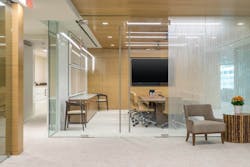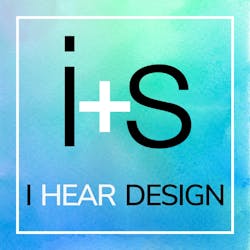4 Key Green Building Standards Used in Architecture and Design
A new season is dawning in the design industry and it’s green and healthy. This push has been on the rise for decades. Manufacturers, architects and designers have taken into consideration the best ways in which to reduce waste and prevent harmful atmospheric emissions.
Having an understanding of some of the more prevalent building standards and their current focus on sustainability and wellness will better enable you to guide design decisions. Here, we look at four green and healthy building standards.
LEED - Leadership in Energy and Environmental Design
The U.S. Green Building Council developed the Leadership in Energy and Environmental Design (LEED) green building rating system in 2000. The Green Building Certification Institute (GBCI) oversees the registration and certification of LEED projects. The LEED certification process promotes an innovative team design approach, responsible siting of the building, minimizing water usage, minimizing energy usage, responsible material sourcing and good indoor air quality.
Highlight: With LEED v4.1 the main focus has been to increase technical rigor with the various reference standards to align with international codes, as well as a shift to life cycle thinking, material ingredient transparency and the circular economy.
LEED vernacular: categories, credits, prerequisites, points
“We are seeing a shift from design-not-certify towards highlighting the benefits to occupants as an incentive to certify. Sustainability has historically focused on energy (as it is relatively easy to quantify) and struggled with occupant impact data. Now we are seeing some building design quantifiable hard data on increased productivity, recruitment and retention all tied to dollars.”
Rachelle Schlosser-Lynn, FASID, CID, LEED Fellow
Senior Associate at MSR
AIA COTE Sustainable Leadership Group Chair
Living Building Challenge
The International Living Future Institute launched the Living Building Challenge (LBC) in 2005. LBC is perhaps the most aggressive building-performance standard including goals of net-zero energy and net-zero water. LBC also takes a more holistic view of the building impact on the community and the occupant with its imperatives that promote equity and beauty.
Highlight: The Declare label was developed in association with LBC, and has crosswalks to LEED, WELL and Fitwel.
LBC vernacular: petals, imperatives
The WELL Building Standard
The International WELL Building Institute developed The WELL Building Standard (WELL) in 2014 with a primary focus on human health and wellness within the built environment. WELL has more of an interior focus than LEED, includes a more holistic approach similar to LBC and requires performance verification through rigorous testing. GBCI also oversees the registration and certification of WELL projects.
Highlight: WELL has created crosswalks to both LEED and LBC. WELL has specific occupant--and performance-based research data tied to each initiative.
WELL vernacular: concepts, features, pre-conditions, optimizations
"Many building owners report the buildings are “healthy,” yet one in four buildings in the world are considered a sick building according to the World Health Organization. We want the trillion-dollar US health industry to understand that building design and operations is as critical as policy and educational changes for health, and to do so, we have to be able to prove it."
Whitney Austin Gray, PhD, LEED AP, WELL Faculty
Senior Vice President, Delos Insights
Fitwel
Fitwel was developed by the U.S. Centers for Disease Control and Prevention (CDC) and General Services Administration (GSA) with a focus on human-health impacts in the work environment, specifically ones that improve occupant health, productivity and health policies. The Center for Active Design (CfAD) is the current operator of Fitwel and oversees the third-party certification.
Highlight: Fitwel is tangible to the operations of a building and changes to be implemented today.
Fitwel vernacular: health impact categories, strategies
Considering a Green Building System for Your Next Project
Many features and design synergies of LEED and LBC are strongly connected to the site and the community around them. LEED and LBC also have a large emphasis on energy and water usage (including irrigation and waste water). Working in tandem with a highly attuned design and construction team, LEED for New Construction (BD+C) and LBC can be a challenging, but meritorious coupling of building certifications for new construction projects.
Interior renovations are typically optimum fits for LEED Interior Design + Construction (LEED ID+C), WELL or Fitwel. While pursuing LEED ID+C within a LEED BD+C certified building boosts the ease of attaining some LEED points in the ID+C system, LEED ID+C is weighted to focus more on what is typically impacted in an interior renovation and includes a credit for a long-term tenant commitment generally implying less renovation material use over time.
Pursuit of WELL and Fitwel will most likely have the owner considering design and program changes for healthier vending machine options, easy access to good quality drinking water, and provision of exercise and well-being rooms.
Listen to more green building design news on your favorite apps
GBCI and IWBI have collaborated over the development and revisions of both LEED and WELL to allow the LEED credits and WELL features to synchronize with one another. ASID Headquarters in Washington was the first project to attain both LEED v4 Interior Design and Construction Platinum and WELL v1 Platinum, two well-earned certifications. A series of data was collected from ASID employees tracking their movement patterns throughout the previous workspace. The space includes circadian rhythm lighting, daylighting and shade controls, a sound masking system, triple filtered drinking water, access to exercise facilities, a wellness room and a healthy materials library. It is a living laboratory of pre- and post-occupancy research.
Another successful example of green building systems playing well together is The Summit Foundation in Washington. The family-owned foundation wanted to be a good steward of the foundation’s investment and their employees’ health. Committed to having a healthy and energy-efficient space, the project design and construction team collaborated early in the project and successfully pursued LEED v4 for Commercial Interiors and Living Building Challenge.
► Finnish Designer Hanna Lantto Enters the Furniture Market
If the owner is focused primarily on occupant health and productivity, Fitwel is a strong and viable option. Based on health data from the CDC and GSA, the Fitwel strategies promote an active workforce and healthy choices. Fitwel is also influencing the market with its lower cost, self-reporting and streamlined process. CfAD noted an 80-percent increase in projects achieving certification between 2017 and 2018.
If you’re considering going green for your next project, consider these five practice tools:
- The four key green building rating systems
- Be familiar with various green building systems’ vernacular (for example, download the WELL App)
- Understand reference standards and goals within green building systems (for example, Walk Score)
- Subscribe to receive pertinent industry resources (for example, LEEDUser, World Green Building Council, Green and Healthy Work Spaces)
- Download and use the AIA COTE spreadsheet
If registering a project for certification isn't in the budget, explore the American Institute of Architects (AIA) COTE Top Ten Toolkit Super Spreadsheet found on AIA’s website.
It's an excellent tool to track project design metrics and inform design decisions and impact.
Sharlyn Thacker, CID, ASID, LEED Fellow, WELL AP; and Holley Henderson, LEED Fellow, Fitwel Ambassador, WELL AP, and founder of H2 Ecodesign; are sustainability consultants who act as catalysts for eco-positive design in the built environment and global business strategy.
Next Up ► Improving Acoustic Renovations | Picking Fabric for Ergonomic Chairs




